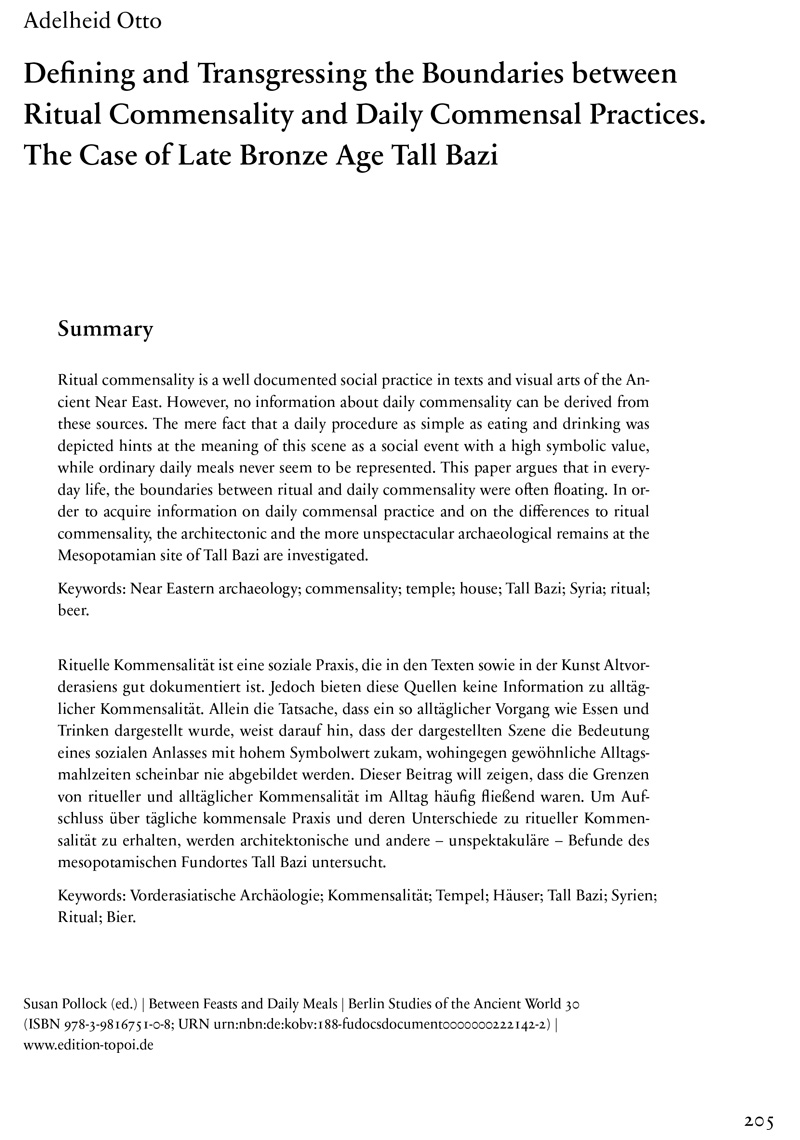Defining and Transgressing the Boundaries between Ritual Commensality and Daily Commensal Practices
The Case of Late Bronze Age Tall Bazi
Ritual commensality is a well documented social practice in texts and visual arts of the Ancient Near East. However, no information about daily commensality can be derived from these sources. The mere fact that a daily procedure as simple as eating and drinking was depicted hints at the meaning of this scene as a social event with a high symbolic value, while ordinary daily meals never seem to be represented. This paper argues that in everyday life, the boundaries between ritual and daily commensality were oten floating. In order to acquire information on daily commensal practice and on the differences to ritual commensality, the architectonic and the more unspectacular archaeological remains at the Mesopotamian site of Tall Bazi are investigated.
Rituelle Kommensalität ist eine soziale Praxis, die in den Texten sowie in der Kunst Altvorderasiens gut dokumentiert ist. Jedoch bieten diese Quellen keine Information zu alltäglicher Kommensalität. Allein die Tatsache, dass ein so alltäglicher Vorgang wie Essen und Trinken dargestellt wurde, weist darauf hin, dass der dargestellten Szene die Bedeutung eines sozialen Anlasses mit hohem Symbolwert zukam, wohingegen gewöhnliche Alltagsmahlzeiten scheinbar nie abgebildet werden. Dieser Beitrag will zeigen, dass die Grenzen von ritueller und alltäglicher Kommensalität im Alltag häufig fließend waren. Um Aufschluss über tägliche kommensale Praxis und deren Unterschiede zu ritueller Kommensalität zu erhalten, werden architektonische und andere – unspektakuläre – Befunde des mesopotamischen Fundortes Tall Bazi untersucht.

